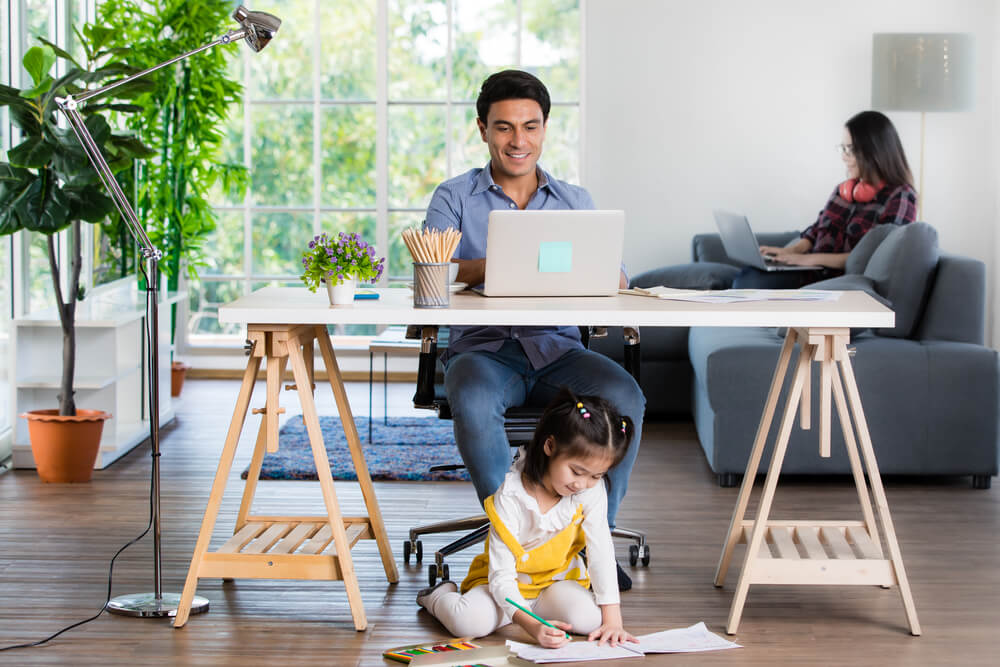The “Living Room Family” Phenomenon Taking Over TikTok

We know that families come in all shapes and sizes—including living room families. Have you heard this phrase? What does it mean, and what does one look like? We’re going to take a look at the definition of a living room family, where this trend came from, and how to figure out if your own family falls into this category.
Contents:
- What is a “Living Room Family” and Where Did it Come From?
- “Living Room Families” vs “Bedroom Families”
- Are You a Living Room Family? Signs to Watch For
- Are Living Room Families Normal? Pros and Cons
- Finding Balance in Family Dynamics
- FAQs
What is a “Living Room Family” and Where Did it Come From?
@alexxx1915 #livingroomfamily #fypシ ♬ original sound – who dis
The term “living room family” emerged on social media, commonly used to describe families whose members spend time at home socializing and enjoying informal activities (like playing games or watching TV) together in the family living room. For these families, living spaces are where members relax and congregate to enjoy downtime.
Living room family life may be noisy, chaotic, busy, and even a little overwhelming at times, but, at its heart, it’s about members enjoying spending time in a communal area, in contrast to being isolated in separate rooms. Living room kids, according to many TikTokers, feel emotionally safe in their entire home, able to express themselves and relax with their family.
The term “living room family” is generally viewed as a positive one, with reactions on social media often centering on the term’s ability to reframe “mess” and “non-perfect” as a normal part of family life. It’s a tonic to other social media trends that focus on presenting polished and seemingly perfect (and unrealistic) family scenes.
“Living Room Families” vs “Bedroom Families”

Nick Fedirko/Shutterstock.com
Social media has also been instrumental in defining “bedroom families” and opening a discussion on how this dynamic differs from “living room families.” While a living room family is all about adults and kids spending lots of time together in a shared space, in a bedroom family members prefer to escape to separate rooms, away from the noise and busyness. A bedroom kid tends to retreat to their bedroom for most of their free time, seeing this space as a sanctuary rather than just somewhere to sleep.
When it comes to living room parents vs bedroom parents, what’s the difference? According to social media, guests to the home of bedroom parents may not even realize there are kids in the house, due to the tidiness of the living room. It’s only in the bedrooms that you’ll find toys scattered around and a general kid-generated “mess.” Some TikTok users recall how they were largely relegated to their rooms as children, with even meals delivered to their bedrooms.
A living room kid, by contrast, enjoys plenty of casual family time in a shared space, and parents entertaining visitors will present a much less formal living space, that’s about functionality rather than “perfection.”
However, it’s important to remember that, as kids get older, they often want more privacy, and are likely to spend more time in their bedrooms. In most cases, families are actually a blend of living room families and bedroom families, with members coming together for shared, informal conversation, relaxation, and fun, as well as spending time on their own.
Are You a Living Room Family? Signs to Watch For

Sura Nualpradid/Shutterstock.com
If your living area or family space is busy and bustling, with toys and signs of family life visible everywhere (and underfoot!), then you likely have a living room family. A key sign is adults and kids sharing the same place to relax and play, wherever this space is located in the house—it could be a larger communal room in the basement, a smaller snug, or a “traditional” front room.
Living room family members tend to view their bedrooms as places meant primarily for sleeping and getting dressed, whereas bedroom families typically spend most of their downtime in their bedrooms, even regularly eating meals there, only coming together in the living room now and again, and for special occasions.
Parenting trends may evolve, but your child’s safety remains a priority. With the Findmykids app, you can keep track of their activities and location effortlessly, no matter where family time happens! Learn more about the Findmykids app.
Are Living Room Families Normal? Pros and Cons

Evgeny Atamanenko/Shutterstock.com
No family is normal! However, living room families seem to be far more common today, as noted by many social media users, who reflect on how much of their own childhood was spent in their bedrooms. As a trend, it’s a generally positive one, that kicks against the polished perfection of internet representations of family life—which are, in most cases, entirely unrealistic. But what are the pros and cons of this particular family dynamic?
Pros of Living Room Family Life
- Family members enjoy plenty of time together, whether relaxing, playing, or watching television—this can help build empathetic connections and strong family bonds.
- Parents may be more likely to spot if their child is upset or anxious about something, due to the time spent together in a shared space.
- It encourages a less “perfect” view of family life and a way to embrace “mess” and foster gratitude.
- Can help kids feel safe and secure in their entire home, and able to express themselves authentically.
Cons of Living Room Family Life
- Can make members feel there is something “wrong” with sometimes wanting privacy or alone time. It’s important that everyone knows they are free to escape to the quietness of their personal space.
- As with any social media trend, the concept can pile pressure on parents to live in a certain way, rather than the one which works best for their family. Usually, families have a blended living room and bedroom family dynamic.
Finding Balance in Family Dynamics

fizkes/Shutterstock.com
As with everything in life—and family life especially—it’s all about finding balance. It’s great to think about ways to encourage family members to spend plenty of time relaxing and having fun together in a shared space, but it’s also important for everyone to know that it’s perfectly normal to want alone time, sometimes. The main point is that every family is different, and will have a unique dynamic that works for them.
If you’d like to embrace the living room family vibe, then there are easy ways to do so. Think about how your living space is laid out, and whether furniture could be moved to make it a cosier, more communal area. Move some toys into the living room, and encourage your kids to spend time playing here, rather than solely in their rooms. Schedule a regular family movie night, or board game evening, or try regularly reading to younger children in the living room—these are effective ways to move towards a living room family dynamic.
Are you a living room family or a bedroom family—or both? We’d love to hear your experiences, share your thoughts in the comments box below!
FAQs
What does the term living room family mean?
The term living room family emerged recently on social media and generally refers to a family dynamic where members spend most of their downtime together, relaxing and playing in a communal area.
What does living room child mean?
A living room child feels safe and happy spending much of their time in the living room, playing with their toys, relaxing, watching TV, and being together as a family. It’s in contrast to bedroom children, who tend to retreat to their rooms for their downtime.
What is a living room family vs a bedroom family?
A living room family spends lots of time together in a shared, communal space, while a bedroom family is one in which members spend most of their downtime in their bedrooms or other spaces in which they are alone. Bedroom kids may even eat their meals in their rooms, and the living rooms in these families are often mess-free with little evidence of toys.
What is the difference between a living room family room and a den?
While family rooms are generally larger and all-purpose, a den is typically smaller, and more private space.
Cover image: PeopleImages.com – Yuri A/Shutterstock.com
Проверьте электронный ящик



















